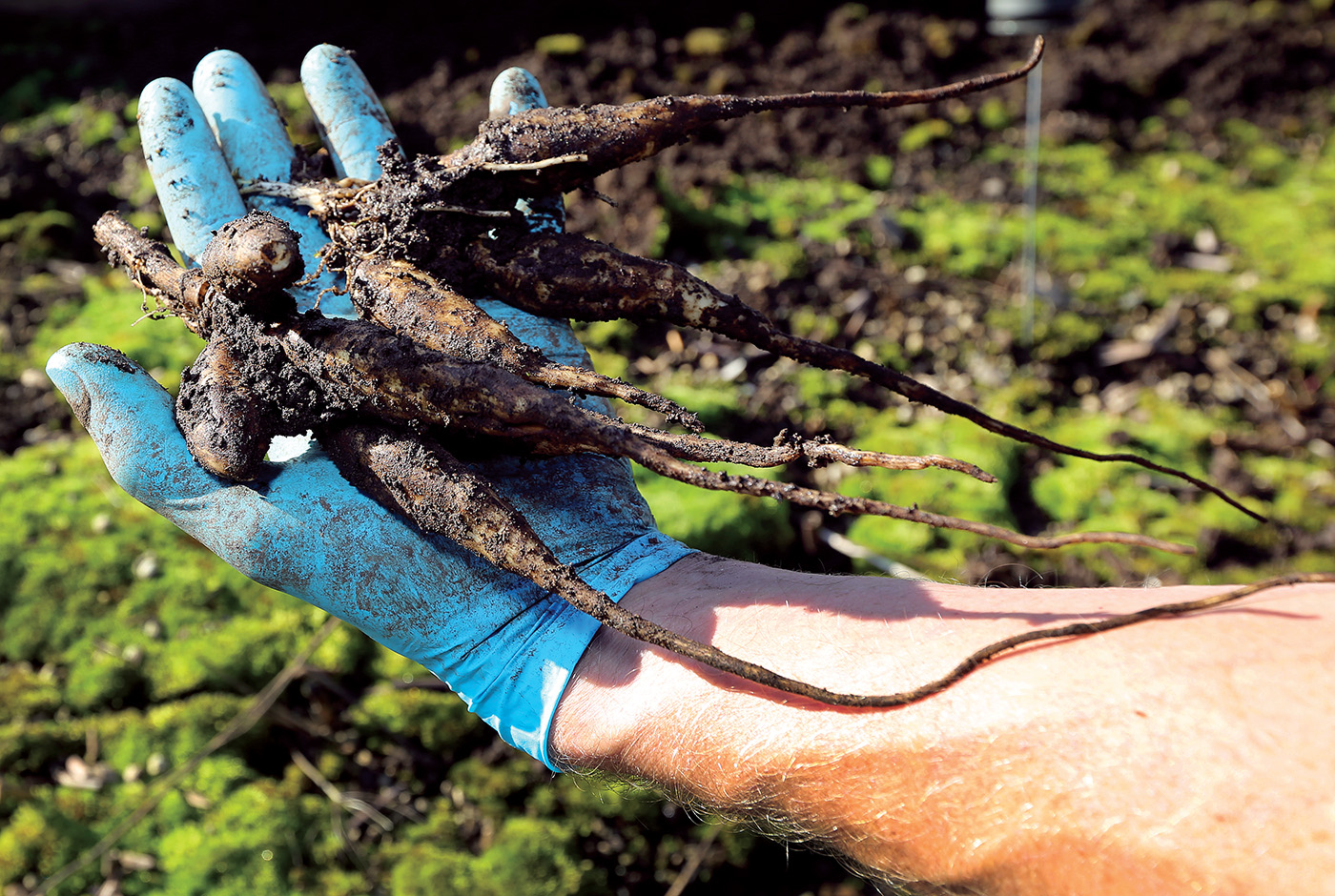Culture
Natural Resources harvests traditional plant bulbs

The Tribe’s Natural Resources Department held its first camas and yampah harvest from the Tribal Plant Materials Program on Tuesday, Nov. 8, in front of the office building off Hebo Road in Grand Ronde.
About 15 Tribal members and employees gathered on a crisp morning at Natural Resources’ raised plant beds and dug out 200 camas bulbs and 200 yampah bulbs.
The camas bulbs ranged from the size of a large garlic clove to the size of a big apple, and the yampah was about the size of a finger.
“Camas was the primary plant food of our ancestors,” said Tribal Historic Preservation Office Manager David Harrelson. “Most people recognize it because it has this beautiful blue flower. The bulbs themselves are harvested and put in an earthen oven and cooked for a long period of time. Eating camas becomes possible after you cook it for two to three days. Our ancestors would pull it out and press it into cakes; big cakes that could be stored for up to three years.”
After a brief explanation of the Tribe’s joint effort with the Plants for People Project, Silviculture Technician Jeremy Ojua showed everyone how to dig up the bulbs and had attendees spread out the length of the raised bed so as not to deplete just one area.
The purpose of the Native Plant Materials Program is to provide locally adapted, high-quality, cost-efficient and accessible Native plant materials for restoration and cultural uses.
In 2013, the Natural Resources Department teamed with the Institute for Applied Ecology and the city of Corvallis to work on a project funded by a restoration grant from the Oregon Watershed Enhancement Board. The grant resulted in the Plants for People project that focuses on using culturally significant plants in habitat restoration activities.
In 2014, Tribal Elders and staff visited Herbert Farm and Natural Area near Corvallis. The use of culturally significant plants in the farm’s habitat restoration project was viewed and the steps taken there were incorporated into the Tribe’s habitat restoration projects.
Ojua said that the bulbs harvested were replanted at Herbert Farms on Thursday, Nov. 10.
“The goal is to establish an area of culturally significant plants to this historically important ground in an effort to provide an area that will be available to Tribal members to collect these plants in a traditional manner for traditional uses,” said Ojua. “Herbert Farms was chosen because of its cultural significance to the Tribe.”
